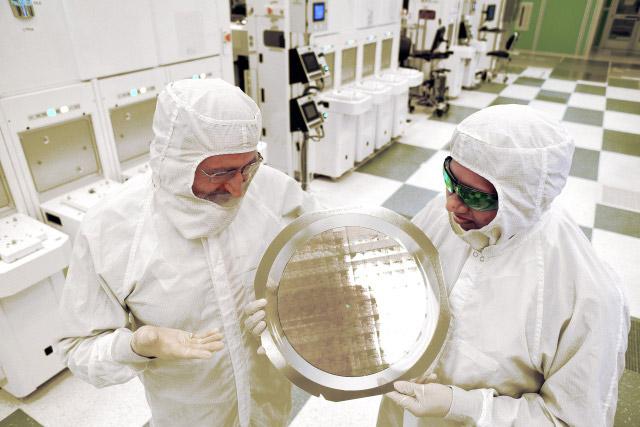
Don’t get too excited just yet, though, as it’s expected that the commercial application of any of the work IBM is doing at the moment is at least two years away. This is more of a proof of concept than anything, but it’s still incredibly significant. This is the first time anyone has demonstrated the creation of a sub-10nm chip that could have potential commercial applications.
IBM’s breakthrough is particularly significant in light of recent rumors than Intel may be abandoning plans to push its next generation of Core architecture to a 10nm node due to production difficulties. Intel normally leads the world in chip production, but it seems IBM may have stolen its competitor’s thunder, at least for now.
The process uses a production technique called extreme ultraviolet lithography, which as Ars points out, is important because it’s thought likely to be the go-to process for future wafer creation. This chip was also made with silicon-germanium, rather than with traditional silicon – a material that is likely to be the mainstay of sub-10nm chips.
With different production methods comes changing standards too, and IBM reports that despite the manometer measurement of the die ‘only’ being reduced by three nanmeters, the surface area of the chip has actually been reduced by almost 50 percent when compared with 10nm processes.
This, IBM believes, will make it possible to reduce heat and improve performance by as much as 50 per cent over planned 10nm hardware. The difference between this and the double-sized 14nm chips in use today will be even more significant.
And the biggest takeaway from this news is that this is planned as a commercial product. IBM isn’t just trying to show off to competitors like Intel and Samsung, it’s seeking to viably produce 7nm hardware.
Editors' Recommendations
- Intel Meteor Lake is about to level up to a crucial stage
- Intel may be changing Meteor Lake CPUs to compete with Apple
- A mysterious new Intel i7 chip just showed up in tests
- New Samsung and IBM discoveries could one day produce ultra-efficient chips
- Apple’s Mac chips could soon use a 3nm process for even better performance




